The Essential Guide To Pre And Post Indian Wedding Rituals
Dec 06, 2016
by
Prerna Malhan
What’s an Indian wedding without the week long elaborate, yet extravagant rituals? Part of the excitement of Indian weddings are of course, the pre and post wedding rituals, the long-drawn (but mostly grand) customs that are performed before and after the wedding day. Each of these assumes a specific significance, and add their own charm to the wedding. Read on as we give you the low-down on the pre and post-Indian wedding rituals and their significance.
Pre Wedding Rituals
Chunni Ceremony
The chunni ceremony is fairly simple and entails the gifting of a red saree and some jewellery to the bride by her mother-in-law. An exchange of gifts by both sides is followed with a lavish meal.
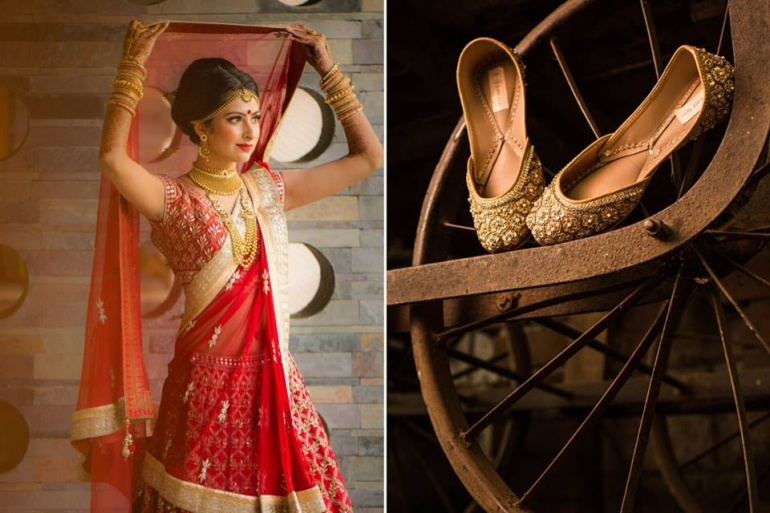
Source
Haldi Ceremony
The haldi ceremony involves applying a paste of turmeric, rose water, curd and sandalwood to the bride’s arms, legs and face to ensure a natural glow for the wedding. The significance of turmeric lies in its antibacterial medicinal properties, which makes it a good conveyor of the family’s blessings. The ceremony is usually held a day before the wedding, in the outdoors.
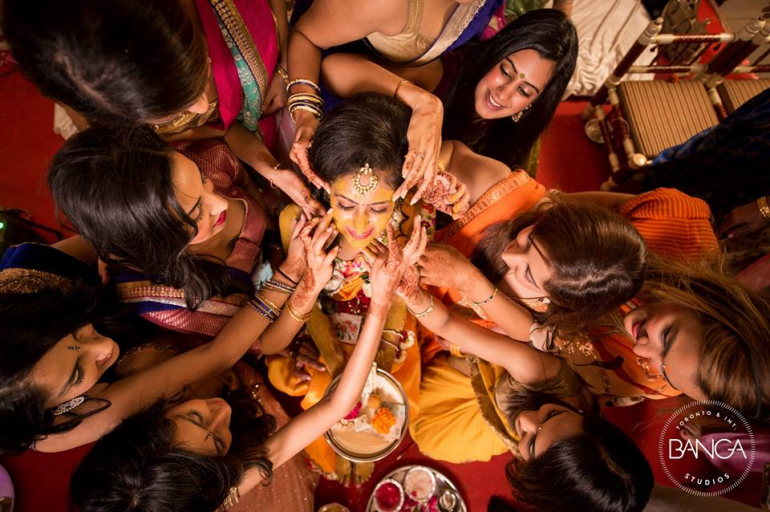
Source
Choora Ceremony
The choora ceremony involves the bride’s maternal uncle and his wife, who present her with a set of twenty one red and ivory bangles, an auspicious symbol of her status as a married woman. The ceremony is usually held on the morning of the day of the wedding, involving a purification of the bangles by immersing it in a milk and rose concoction, following which the elders touch the bangles as a mark of their blessings. The kaleere (a decoration made of dessicated coconut) and bangles are a reminder of the bride’s maiden family.
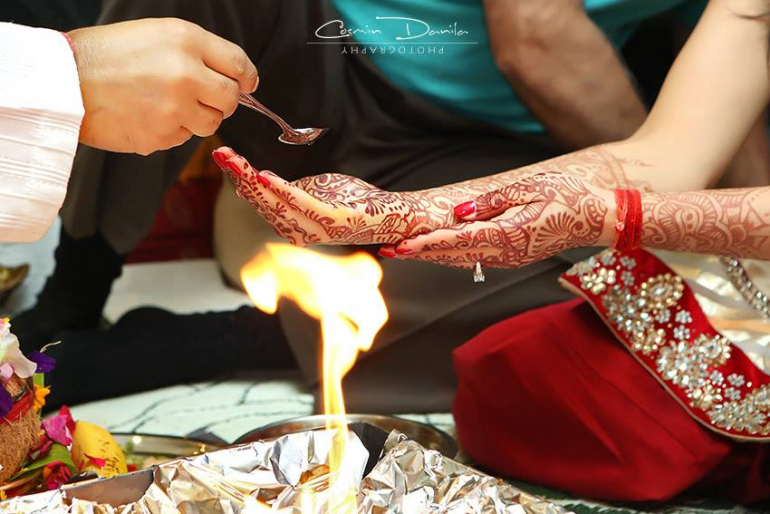
Source
Mehendi Ceremony
Also known as the sangeet ceremony, this is a favourite among many, for it is held the night before the wedding. This is when the bride and her female relatives adorn their hands (and feet) with mehendi, which represents the sanctity of marriage. The dark henna paste also signifies warmth and affection between the couple.
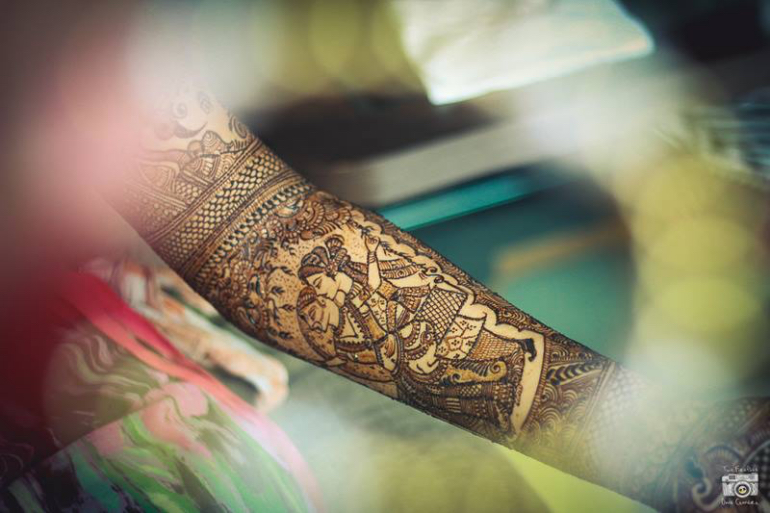
Source
Post Wedding Rituals
Joota Chupai
Joota Chupai or shoe-stealing is a fun ceremony in Indian weddings where the sisters of the bride hide the groom's footwear. They do this to seek ransom in the form of money or gifts in exchange of shoes.
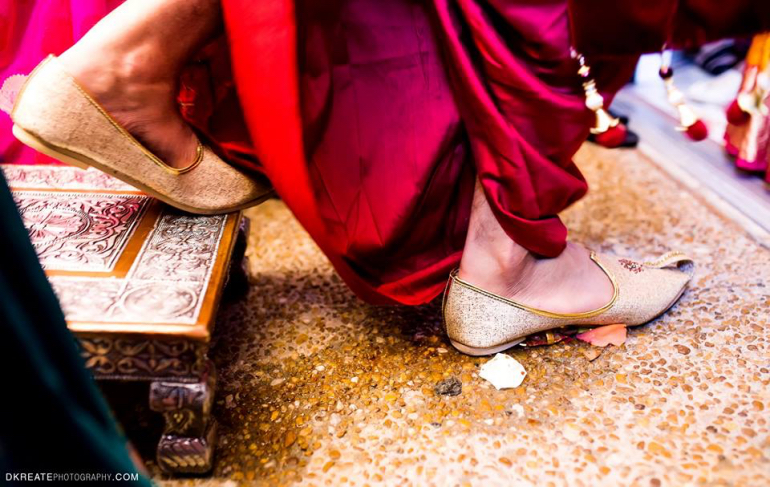
Source
Vidaai Ceremony
You will be overwhelmed by this particular custom, in which the bride stops at her parent's doorstep to finally bid adieu to her home and enter a new life. She pauses at the door and throws coins and rice over her head three times. She does this to ensure prosperity of her parent's house. The meaning of this ceremony is that the bride repays her parents for her upbringing.
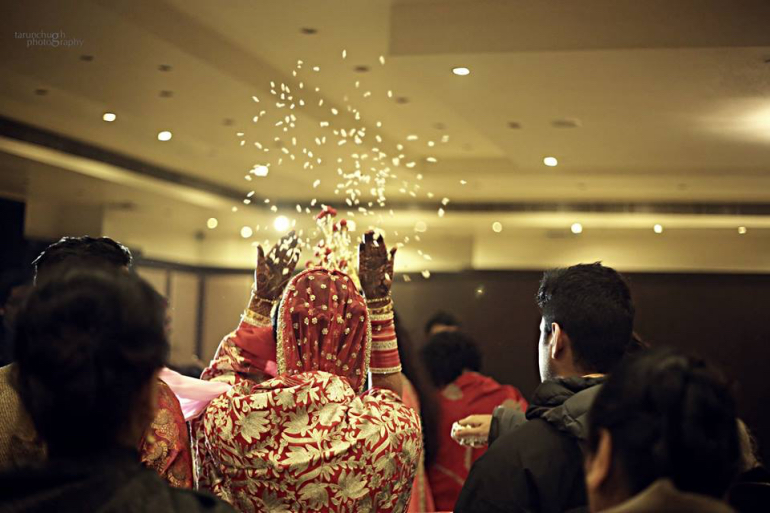
Source
Grihapravesh
This Indian wedding tradition is done to welcome the newly weds home by performing an aarti. By doing so, the mother-in-law tries to ward off the evil spirits and welcome her daughter-in-law with respect and dignity. The bride has to knock over a pot full of rice with her right foot. In a lot of communities, this ritual also includes stepping on a plate of water and vermillion and walking inside the home to the prayer room.
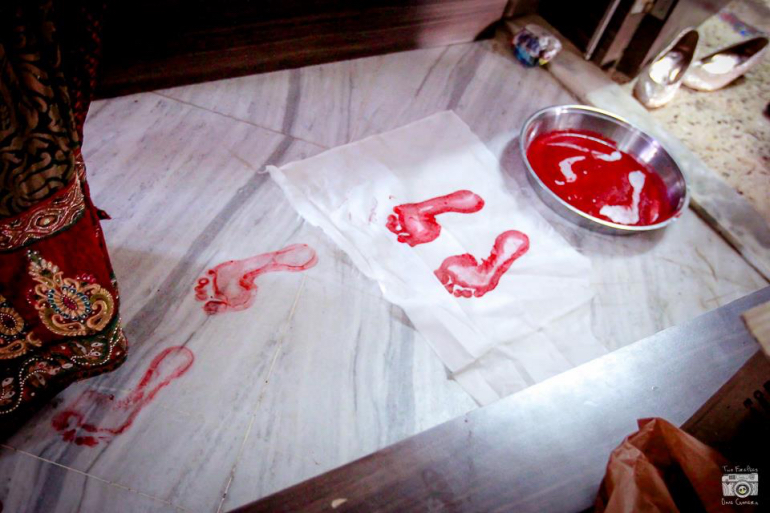
Source
Mooh-Dekhai Ceremony
This ceremony is done once the bride enters the groom's house so as to break the ice, unveiling of the bride is done. All the family members get a chance to look at the bride closely and bless her with gifts, usually money or gold.
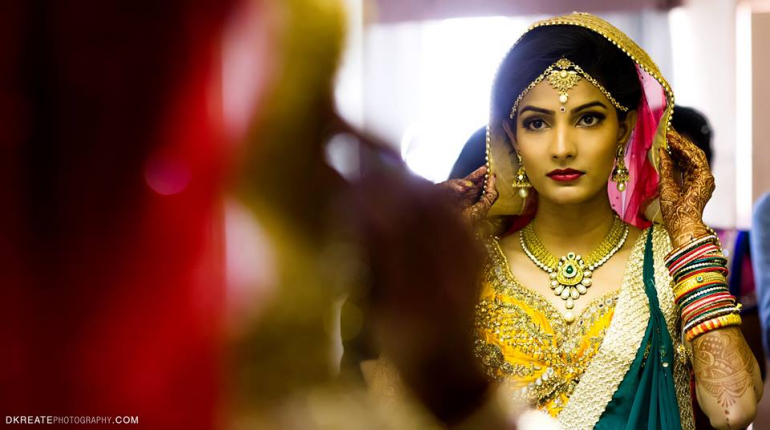
Source
That's the gist for Indian Wedding Rituals. For more Indian Wedding Inspiration check out the
Wedding Wire.
Your essential guide to Indian wedding traditions and rituals.
